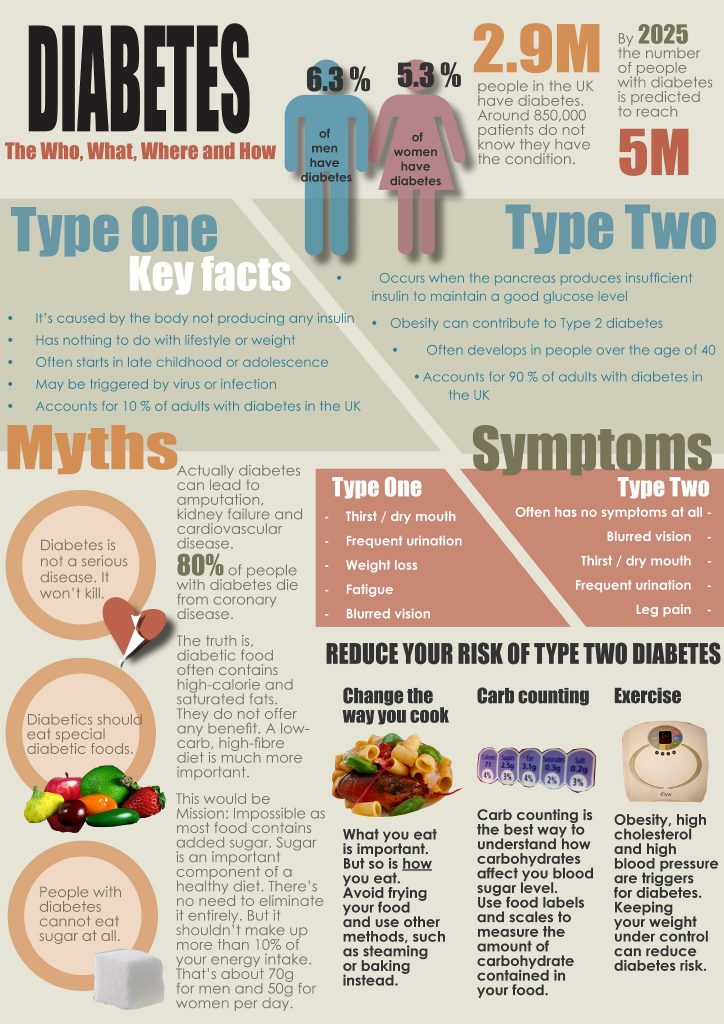November Is American Diabetes Month — Know Your Risk for Developing the Disease
November 1, 2016
by Mankato Clinic

Diabetes – The Who, What, Where and How
6.3% of men have diabetes
5.3% of women have diabetes
2.9 Million people in the UK have diabetes. Around 850,000 patients do not know they have the condition. By 2015 the number of people with diabetes is predicted to reach 5 million.
Type One Key Facts:
- It’s caused by the body not producing any insulin
- Has nothing to do with lifestyle or weight
- Often starts in late childhood or adolescence
- May be triggered by virus or infection
- Accounts for 10% of adults with diabetes in the UK
Type Two:
- Occurs when the pancreas produces insufficient insulin to maintain a good glucose level
- Obesity can contribute to Type 2 diabetes
- Often develops in people over the age of 40
- Accounts for 90% of adults with diabetes in the UK
Myths:
- Diabetes is not a serious disease. It won’t kill
- Diabetes should eat special diabetic foods.
- People with diabetes cannot eat sugar at all.
- Actually diabetes can lead to amputation, kidney failure and cardiovascular disease. 80% of people with diabetes die from coronary disease.
- The truth is diabetic food often contains high-calorie and saturated fats. They do not offer any benefit. A low-carb, high-fibre diet is much more important.
- This would be Mission: Impossible as most food contains added sugar. Sugar is an important component of a healthy diet. There’s no need to eliminate it entirely. But it shouldn’t make up more than 10% of your energy intake. That’s about 70g for men and 50g for women per day.
Symptoms:
Type One:
- Thirst / dry mouth
- Frequent urination
- Weight Loss
- Fatique
- Blurred Vision
Type Two:
- Often no symptoms at all
- Blurred Vision
- Thirst / dry mouth
- Frequent urination
- Leg pain
Reduce Your Risk or Type Two Diabetes
- Change the way you cook – What you eat is important. But so is how you eat. Avoid frying your food and use other methods, such as steaming or baking instead.
- Carb counting- Carb counting is the best way to understand how carbohydrates affect your blood sugar level. Use food labels and scales to measure the amount of carbohydrate contained in your food.
- Exercise – Obesity, high cholesterol and high blood pressure are triggers for diabetes. Keeping your weight under control can reduce diabetes risk.